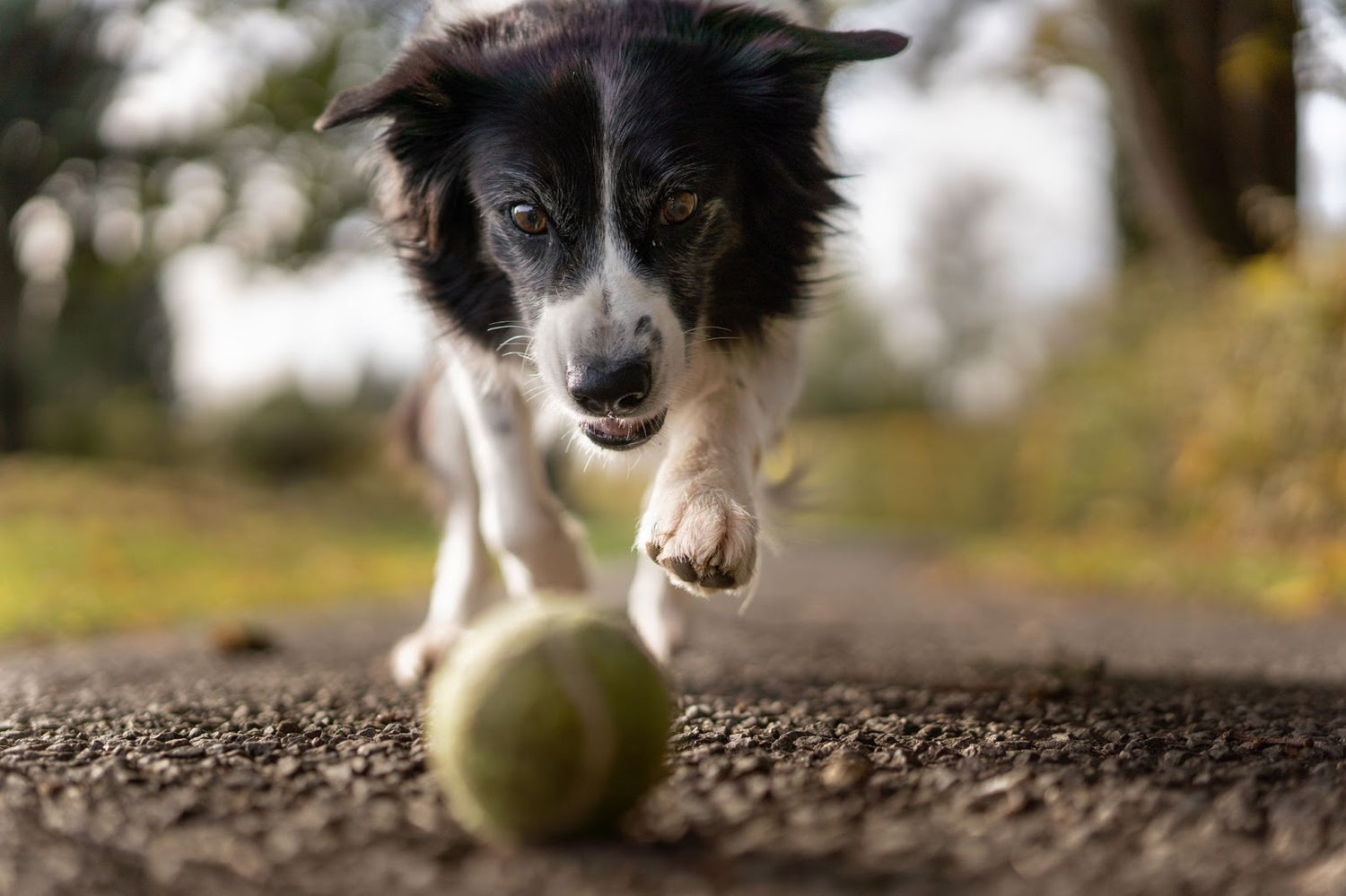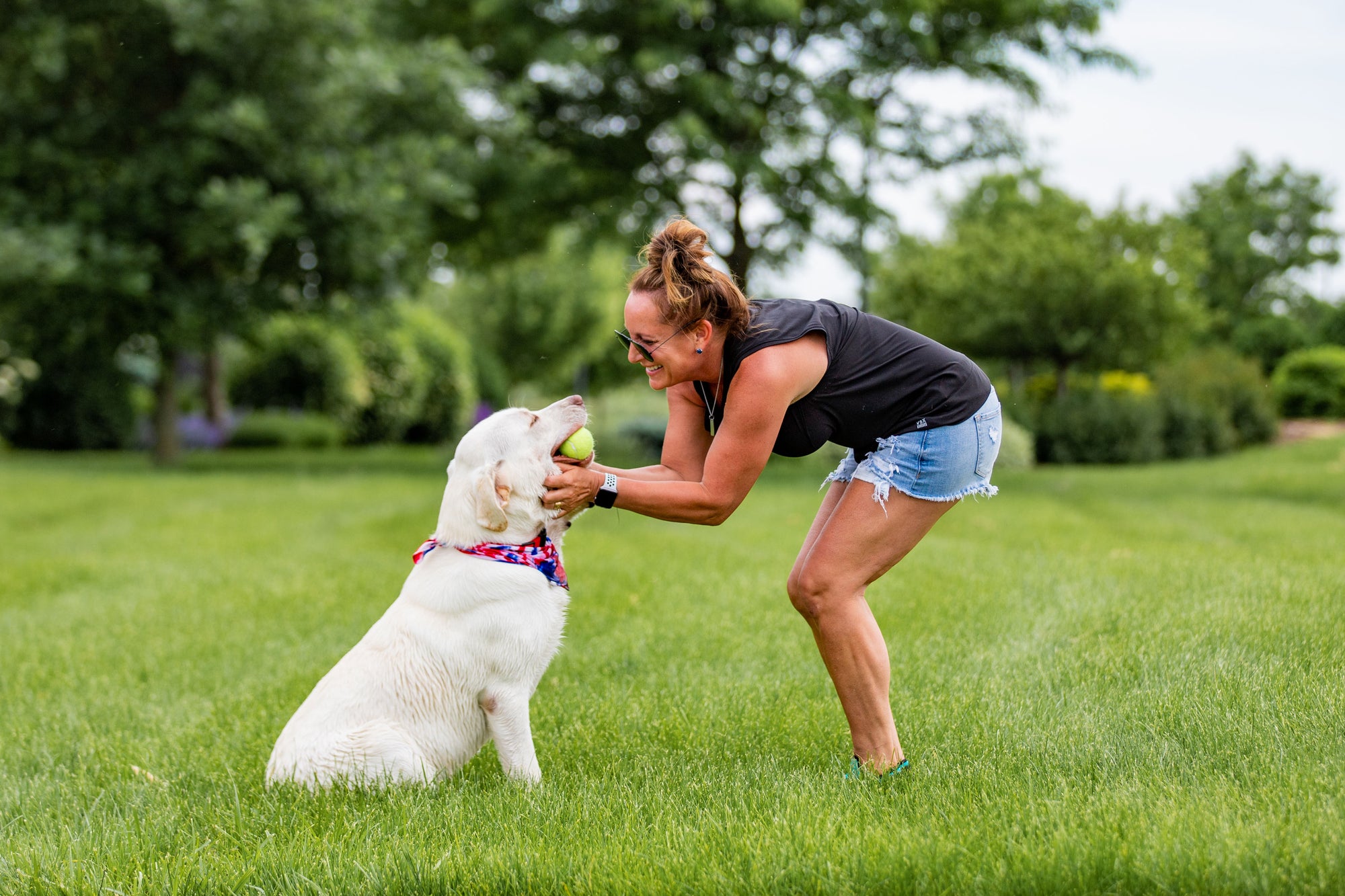Have you ever heard of hip dysplasia in dogs? If you haven’t, don’t worry… a lot of people haven’t! However, just because you haven’t heard of it doesn’t mean it can’t happen to your dog.
Knowing the reasons why it may happen, how to identify its symptoms, and what the potential treatment options for hip dysplasia in dogs are can make you a more prepared, responsible pet owner. Learn more, with WINPRO Pet.
Hip Dysplasia In Dogs Basics
Canine hip dysplasia is a condition that impacts the dog’s skeletal system. Specifically, the hip joints. If you don’t know much about the musculoskeletal system, it’s ok! You don’t need to know many of the details to understand how hip dysplasia works.
All you need to know are the basics - the hip joint is a “ball and socket” which means the end of the femur (ball) fits snugly into the hip socket. The joint is filled with a type of lubricating fluid called synovial fluid, which allows the joint to move around smoothly. At least, that’s how it works in normal anatomy.
In dogs that suffer from hip dysplasia, that ball and socket joint experiences a variety of different issues. In some cases, the hip joint doesn’t develop properly during puppyhood. In others, the ball and socket joint is too close together, leading to rubbing and grinding. In both cases, over time, the hip joint starts to degrade, leading to pain and a change in the joint’s range of motion.
What Types Of Dogs Are More At Risk?
While any dog can develop hip dysplasia, there are a few risk factors that dog owners should be aware of. In general, hip dysplasia happens mostly to dogs that are considered part of the “large (more than 50 lbs.)” or “giant (more than 90 - 100 lbs.)” breed categories.
That is likely due to the genetic/hereditary factors that can trigger the condition, which we’ll discuss in more detail later on in this article. Canine hip dysplasia is especially common in large breed dogs. If you have a purebred dog that is any of the following breeds, or a mixed breed dog that is predominately one or multiple of them, it’s a good idea to keep a closer eye out for symptoms within the following breeds:
- German Shepherds
- Saint Bernards
- Labrador Retrievers
- Golden Retrievers
- Old English Sheepdogs
- Rottweilers
- Bulldogs
Causes Of Hip Dysplasia In Dogs
In nearly every case, hip dysplasia in dogs has at least a small genetic component. When that genetic component is present, it can be triggered by a few different things.
Diet can be a major triggering factor with hip dysplasia in dogs. Large and giant breed dogs especially may require a special diet to help them grow at a normal rate. In fact, in some studies, puppies that were free fed as much as they wanted to eat were twice as likely to develop hip dysplasia later in life.
The right diet may literally be able to keep your dog healthier later on in life. Mostly, this is because slowing down your dog’s growth to a more controlled pace takes excess pressure off the joints, so that they can grow more regularly and become stronger.
Exercise is also something to take into account if you have a dog that is likely to be more prone to developing hip dysplasia. Ironically, it isn’t just too little exercise that can be a problem, it is also too much.
Both factors impact the amount of pressure that is put on the dog’s hip joints, and can trigger or worsen not even hip dysplasia but also arthritis, pain, and other issues. This is especially true when your puppy is younger and their joints and bones are still developing.
Symptoms Of Hip Dysplasia In Dogs
Because hip dysplasia can happen to any dog at any age (sometimes as early as four months old), there is more importance placed on really getting to know the symptoms.
The severity of these symptoms can vary, so don’t ignore milder symptoms as they can (and usually do) get worse.
- Reduced range of motion (how far they can move their joints/legs).
- Loss of muscle mass in the hind end/thighs, which can be overcompensated by the front legs gaining strength.
- Hip discomfort.
- Weakness in the hind legs/back.
- Instability and joint laxity.
- “Bunny hopping” gait, or using both hind legs at the same time.
- Lameness in the hind legs.
- Difficulty changing positions (laying down, getting up, reluctance to climb stairs).
- Stiffness or visible limping.
The most important key to all of this is knowing your dog. You’re the first line of defense when it comes to identifying what may be new and different for your dog to experience, and can make a vet visit much earlier than other people could.
Early diagnosis increases the odds of successful treatment so, if anything seems off with your dog, make sure that you don’t blow it off.
Treatment Options For Hip Dysplasia In Dogs
Hip dysplasia in dogs isn’t something that your dog needs to just deal with. Once you notice any symptoms, make an appointment with your veterinarian to have your dog officially diagnosed.
Then, your vet can talk with you about how advanced the condition is, and what your dog’s treatment options may be. By noting the clinical signs and performing an x-ray, your vet or veterinary surgeon can help put together a treatment plan.
Here are a few of the more common treatment options that your veterinarian may suggest:
- If your dog is overweight, your vet may suggest some weight reduction technique. These help to take stress off the joints in the hips, which can also reduce discomfort.
- Physical therapy.
- Nutrition changes, including switching to a more supportive food.
- Medications, such as NSAIDs.
- Surgery (total hip replacement (THR) using implants, juvenile pubic symphysiodesis (JPS), femoral head ostectomy (FHO), de-nerving of the hip joint capsule (capsular neurectomy) double or triple pelvic osteotomy (DPO/TPO)).
Most vets start with the least invasive treatments and work up to surgical options, but this will likely all depend on how early you caught the issue and how severe it has gotten.
Luckily, prognosis for hip dysplasia in dogs is usually good, especially with successful treatment and lifestyle modifications. With time, your dog may be able to restore normal hip function and a normal range of motion.
Reducing Hip Dysplasia In Dogs
Instead of having to work behind a diagnosis of hip dysplasia to try to slow down the progression of the condition, there are ways to get ahead of it and even potentially reduce it from occurring in the first place.
Starting your dog on a healthy supportive diet, monitoring their exercise, keeping them at a healthy weight, and following your vet’s recommendations are all great techniques. The earlier you start, the better it is.
If you are getting your puppy from a purebred dog breeder, ask them if they have screened their dogs for the hereditary hip dysplasia gene.
You can also have your own dog screened by the Orthopedic Foundation for Animals (OFA). The information you may find out can help you know the best ways to keep your dog as safe as possible, and increase his or her quality of life.
In Summary
Hip dysplasia in dogs can be painful and limiting to your dog’s quality of life but, the good news is that it doesn’t have to be!
WINPRO’s Hip & Joint supplement can help reduce tension and discomfort with your dog’s hip dysplasia. Learning the common symptoms of hip dysplasia, identifying the factors that can cause it (especially those that pertain to your dog), and what treatment and prevention options are out there can help your dog stay his or her happy, loving self for as long as possible.
Sources:
Hip Dysplasia in Dogs | VCA Animal Hospital (vcahospitals.com)
Hip Dysplasia In Dogs: Prevention, Causes, Symptoms & Treatment | AKC (akc.org)
Orthopedic Foundation for Animals - Companion Animal Research Center (ofa.org)



